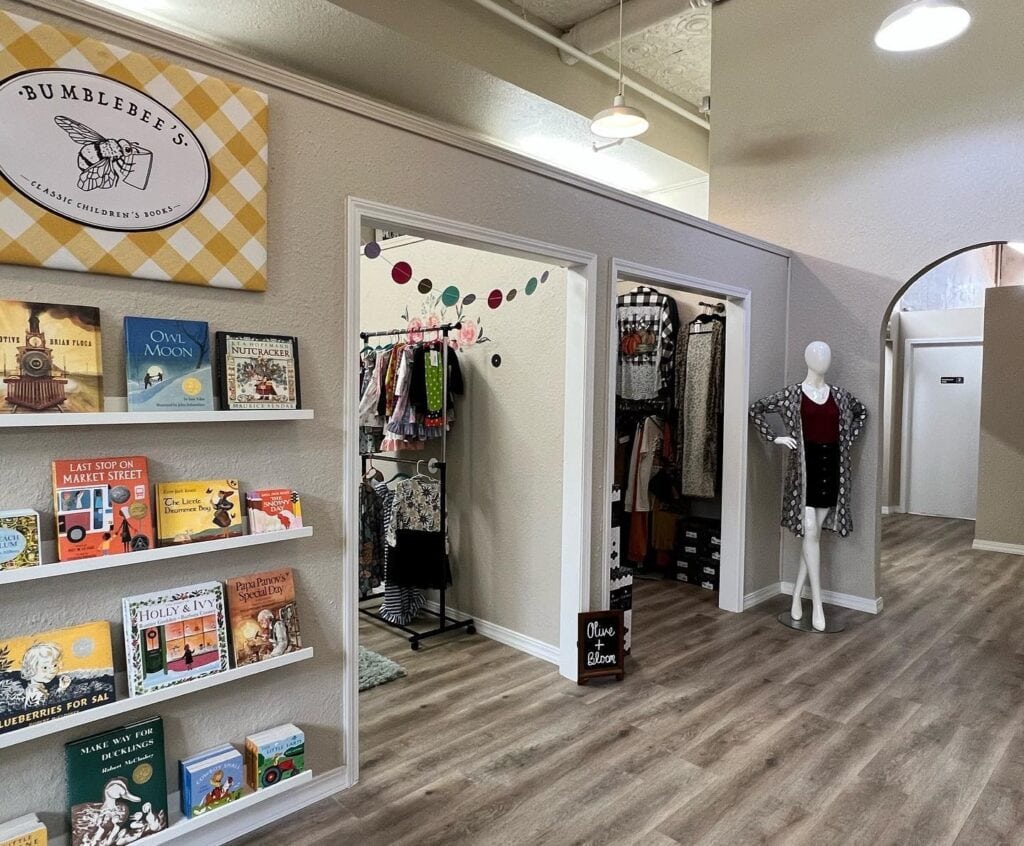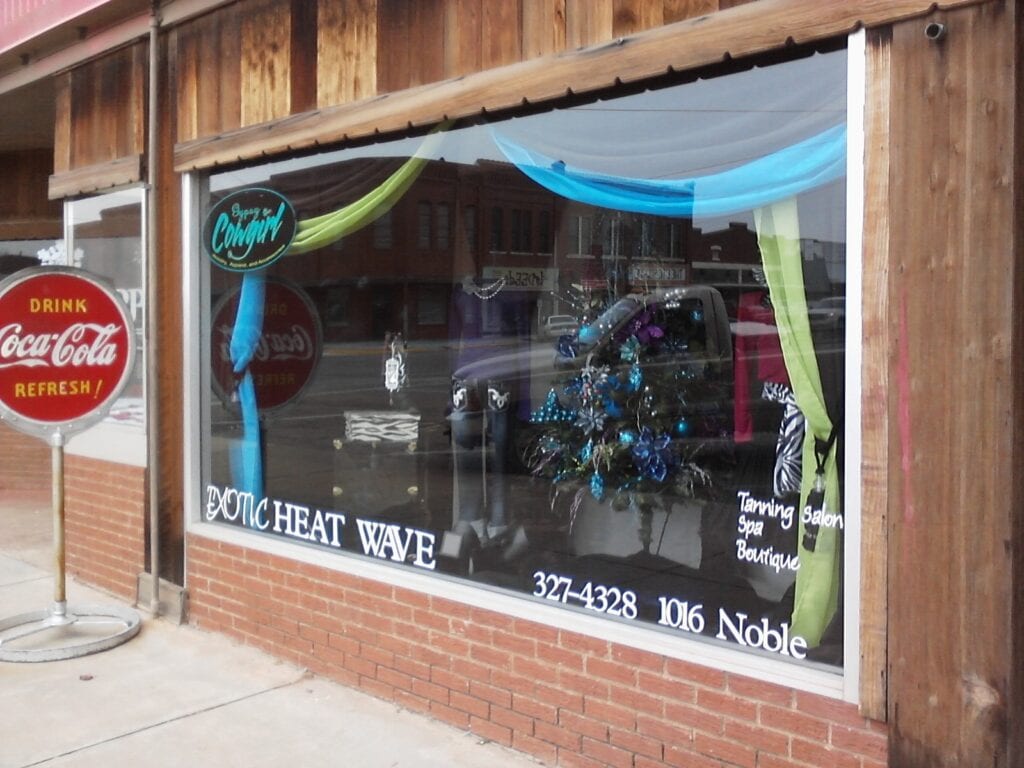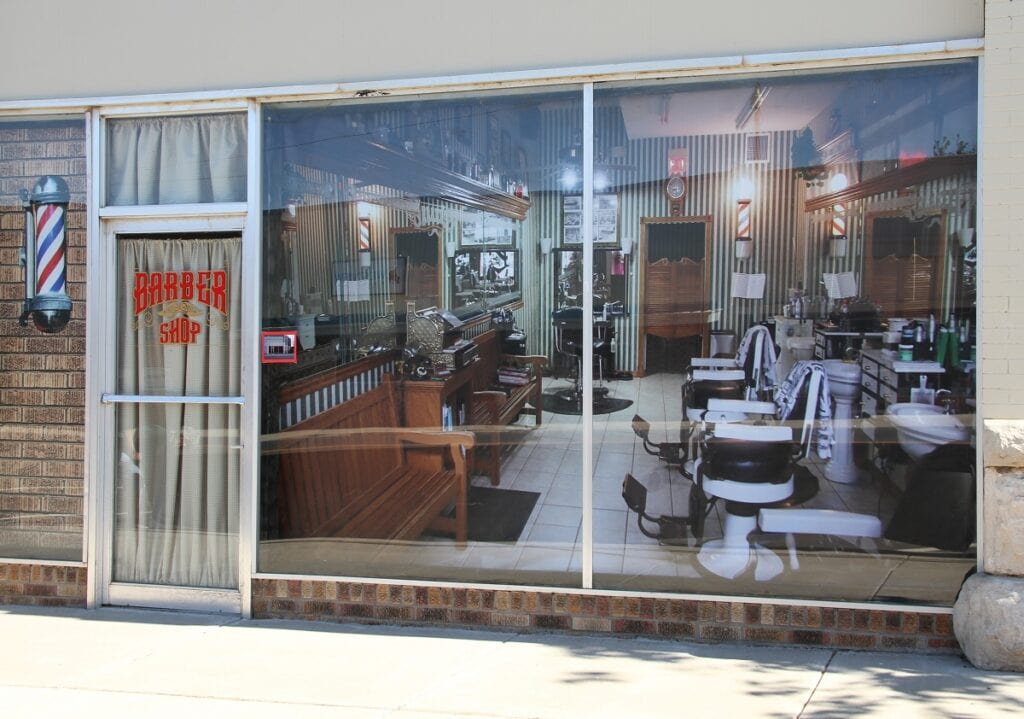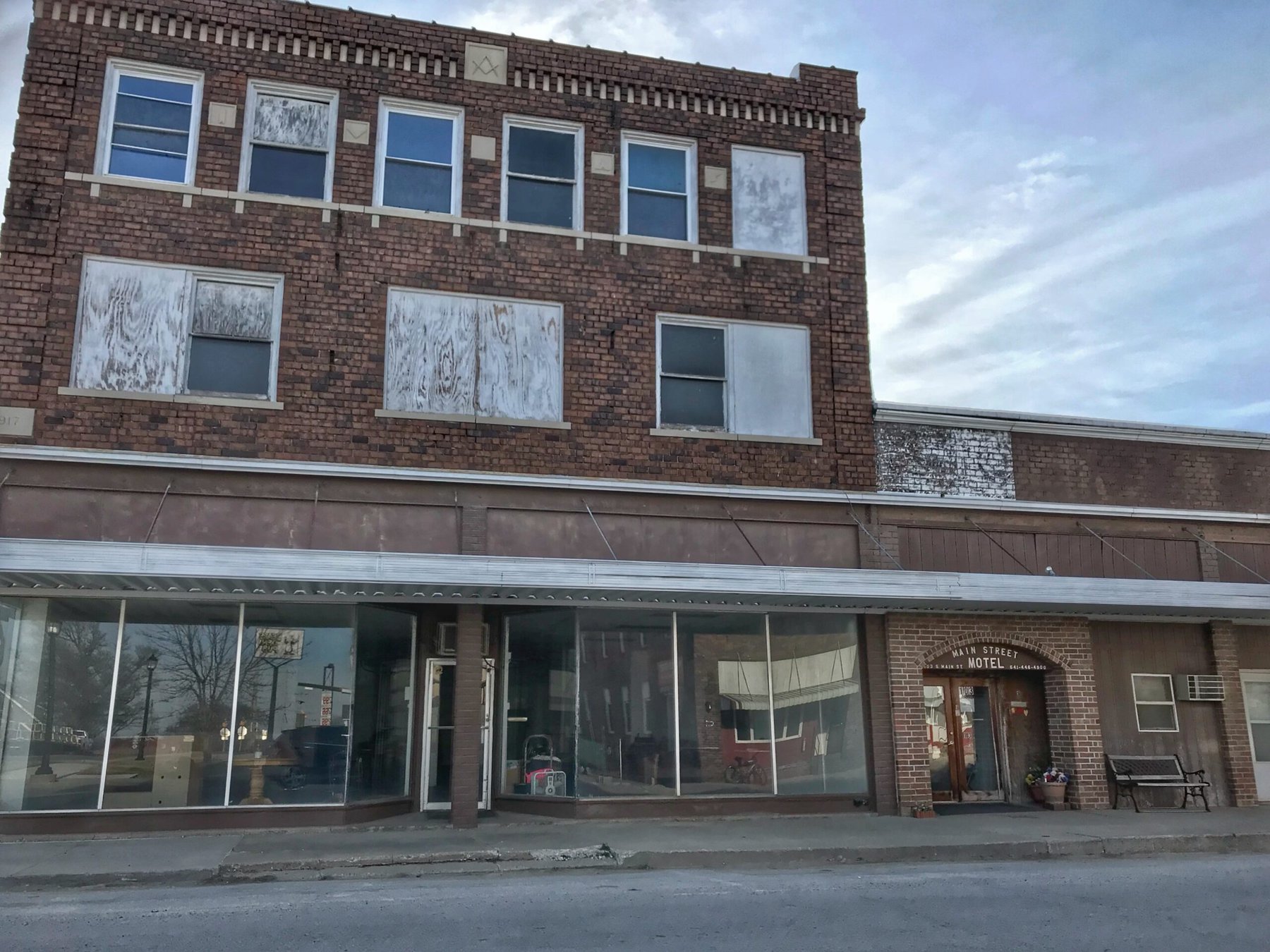A dozen ideas for filling empty buildings in small towns
People ask Deb Brown and me, “What would business would work in a small town?” or “What business does every small town need?” or “How can we fill all these empty buildings?” The questions are all related.
1. Try a pop-up. Set up a temporary store, restaurant, cafe, interactive experience, etc., just for the busy season or even one day for a special event. The operator gets to try out an idea, learn from the experience, and maybe get started on a more permanent business. The community gets an idea of what could be possible. And maybe another new entrepreneur gets inspired. Learn more in What is a pop-up business? Here’s how to convince a building owner to allow pop-ups.
2. Make a space that multiple businesses can divide and share. It can be a space carefully designed for compatible small retail shops, like The Village in Washington, Iowa. (Read about it in One downtown building gives life to many new retail stores.)
Deb and I know of so many places that have done this. Two of my recent favorites are the Colfax Mercantile in Colfax, Washington, and Walker Mercantile Company in Woodward, Oklahoma.

3. Create a co-working space. Give a bunch of independent professionals a space they can share whenever they need it. They’ll not only reduce their costs, but they’ll also benefit from the creative interaction and networking. Here’s how Pella, Iowa, started their co-working.
4. Showcase your artists. Empty buildings aren’t empty if they’re full of art. Sayre, Pennsylvania, tells you how they did their successful pop-up art events and how they got building owners to say yes.

5. Set up a business incubator. Ron Hirst has some suggestions to make incubators work in small towns. Deb did an informal incubator project when she was a Chamber of Commerce director: 3 months free rent, reduced rent the rest of the year, and support from local agencies. (Read more in Deb’s How to Fill Empty Buildings.)
6. Put empty buildings up for sale online. Way too often, the building is only sorta for sale. You have to know the owner to know it’s for sale, or maybe there’s a faded sign in the window with some outdated information. (Hey, if you’d been trying to sell a building for more than five years without success, you might let things slip, too.) Make sure available properties are listed with an agent and information is updated.
Hot tip: List available buildings with Crexi.com or Loopnet.com. That’s the scoop from a new rural resident who found his place in Kansas online and moved from New York City.
7. Flip it: Renovate, then lease or sell. That’s how the Project Waynoka Foundation turned an empty building into the downtown library in Waynoka, Oklahoma. Then they used the money to buy another empty building. They renovated it, and then sold it to a business. Then they used that money to buy another empty building.
8. Re-create old schools as creative spaces. Lots of small towns have old school buildings sitting empty. Harveyville, Kansas, made a creative conference space and artistic residences out of an old school. I’ve also heard of school buildings remade as apartments, a product warehouse, a youth scout council headquarters, a business incubator with commercial kitchen, and work crew housing.
9. Use the upstairs for apartments or lodging. Here are some downtown housing resources. Also check out how Julia created short term lodging in Buffalo, Oklahoma.
Is your building in bad shape?
Even if it’s not ready to occupy, it doesn’t have to just sit there.
10. Rent the front window to another store for a window display. I saw this in my big town of Alva, Oklahoma.

11. Clean it up, dress it up, put up lights. Chris Van Patten told me about a building in Buffalo, New York, that put up lights for the holidays, and promptly sold. In Pullman, Washington, one building went from a long-term vacancy to rented after cleaning the windows.
12. Show what it could be. Paint the windows so it looks like a we’re looking into a real business. (Don’t want it on the windows? Paint on paper and hang it inside the windows.) Or get an artist or architect to draw what the building could look like with different businesses there. Put the drawings on display in the front window.

Need more idea for building in bad shape? Check out these 19 things you can do even if it has no roof or is an empty lot.
Why it matters: an empty building can cost your town a lot more than you think.
Empty buildings can be a real drain. When Deb heard about a downtown building that burned right next door to the movie theater she had helped to save, she shared a lot about costs of empty buildings, codes, enforcement and a bit of a rant. Well worth your time.
Brainstorming for your town
These are the kind of things we brainstorm when I visit small towns. We get people together, I bring examples I’ve found all over, locals bring their knowledge of your people and the place, and not too surprisingly, we come up with better ideas together. If you’re interested in having me come to your town, contact me and we’ll talk about it.

